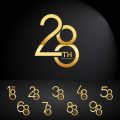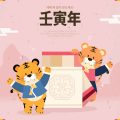Introduction to Tea Leaf Reading
Tea leaf reading, also known as tasseography, is a fascinating form of divination practiced across the globe. This ancient art traces its roots back to both Eastern and Western traditions, with evidence suggesting it originated in China before spreading to the Middle East and later to Europe through trade routes. In its essence, tea leaf reading involves interpreting patterns left by tea leaves in the bottom of a cup, offering guidance or predictions about the future. While it began as a communal ritual among friends and family, its cultural significance has evolved over centuries, reflecting the values and beliefs of diverse societies. Today, tea leaf reading continues to captivate people worldwide, from traditional ceremonies in Asia and Eastern Europe to modern interpretations found in American teahouses and metaphysical communities. As we explore how this practice differs around the world and within the United States, it becomes clear that tasseography serves as a unique window into the cultural fabric of each society that embraces it.
Traditional Tea Leaf Reading Practices Around the World
Tea leaf reading, also known as tasseography or tasseomancy, has deep roots in various cultures around the globe. Each region brings its own customs, rituals, and interpretations to this ancient art, making the practice of reading tea leaves a fascinating reflection of cultural identity and belief systems. To better understand these cultural differences, let’s explore how tea leaf reading is traditionally practiced in the United Kingdom, China, and the Middle East.
The United Kingdom: Social Ritual Meets Fortune-Telling
In the UK, tea leaf reading gained popularity during the Victorian era and became associated with afternoon tea gatherings. It is often seen as a parlor game—an entertaining yet mystical activity performed at social events. British practitioners use fine bone china cups and loose-leaf black tea. After drinking the tea, the cup is swirled three times clockwise before being turned upside down on a saucer to drain. The reader then interprets the shapes left by the leaves inside the cup, drawing upon traditional symbolism such as hearts (love), anchors (hope), or birds (news). While some treat it as light-hearted fun, others take their readings more seriously.
China: Ancient Roots and Spiritual Guidance
Chinese tea culture dates back thousands of years, and while tea itself is central to daily life and spiritual practice, tea leaf reading is less common than in Western countries. However, when practiced, it is deeply intertwined with concepts from Taoism and Chinese folk beliefs. The focus tends to be on introspection and harmony rather than fortune-telling. Unique customs include using green or oolong teas and sometimes incorporating meditation before interpreting patterns formed by the leaves. Symbols are interpreted with a strong emphasis on balance, health, prosperity, and family harmony.
The Middle East: Coffee Grounds and Cross-Cultural Influence
While tea is popular throughout the Middle East, coffee ground reading (similar in technique to tea leaf reading) is more widespread. However, in regions like Turkey and Iran where both beverages are beloved, tea leaf reading can still be found alongside coffee readings at family gatherings or community events. Middle Eastern readers often incorporate prayers or blessings into their rituals. They pay special attention to symbols like eyes (protection), camels (journeys), or water (emotions). Hospitality plays a major role; sharing a cup of tea becomes both an act of bonding and divination.
Comparing Customs Across Cultures
| Region | Main Beverage | Key Rituals | Common Symbols |
|---|---|---|---|
| United Kingdom | Black Tea | Afternoon Tea; Swirling & Inverting Cup | Hearts, Anchors, Birds |
| China | Green/Oolong Tea | Meditation; Focus on Harmony | Bamboo, Fish, Mountains |
| Middle East | Tea/Coffee | Blessings; Hospitality Emphasis | Eyes, Camels, Water |
Cultural Significance in Everyday Life
The way each culture practices tea leaf reading reveals much about its values—whether prioritizing social connection, spiritual insight, or protective blessings. These traditions continue to evolve as communities interact globally but remain rooted in unique local customs that define their approach to divination.
![]()
3. Symbolism and Interpretation Variations
Across the globe, tea leaf reading—also known as tasseography—demonstrates remarkable diversity in its symbolism and interpretive methods. In traditional British tea culture, for instance, readers often focus on classic symbols such as anchors (for hope), hearts (for love), or horseshoes (for luck). Each symbol carries a fairly standardized meaning, reflecting centuries-old folklore and societal values. In contrast, Chinese tea leaf reading may emphasize animals, landscapes, or calligraphic shapes, drawing deeply from local mythology and philosophical traditions like Taoism and Confucianism.
The framework for interpretation also varies widely. European practitioners typically approach the practice with a structured system: the cup is divided into sections representing past, present, and future, while the handle may signify the querent or focal point of inquiry. In Middle Eastern cultures, coffee ground readings have influenced the interpretation of tea leaves, introducing additional layers of symbolism and sometimes even incorporating astrological elements.
In the United States, tasseography has evolved into a unique blend of these international approaches. American readers are more likely to adapt symbolism to reflect personal or regional experiences. For example, symbols such as cars, skyscrapers, or sports equipment might appear in modern interpretations—an adaptation reflecting the contemporary American lifestyle. Methods are often less rigid; some readers encourage clients to co-create meaning from what they see in the cup, blending intuition with tradition.
This mosaic of interpretive frameworks highlights how tea leaf reading is not only shaped by cultural heritage but also by the social context and values of each region. Whether guided by ancient myth or modern experience, the act of interpreting tea leaves serves as both a mirror and a map—reflecting diverse worldviews and providing guidance tailored to each seeker’s background.
4. Evolution of Tea Leaf Reading in the U.S.
Tea leaf reading, or tasseography, made its way to the United States through waves of immigration, particularly from Europe and Asia, during the late 19th and early 20th centuries. As Americans encountered new cultures and spiritual practices, tea leaf reading began to evolve in a uniquely American context. Unlike its traditional roots, which were often closely tied to specific cultural rituals or family traditions, American tea leaf reading became more commercialized and accessible to a broader audience.
One major trend in the U.S. was the integration of tea leaf reading into the wider movement of spiritualism that gained popularity in the early 1900s. Tea rooms and parlors appeared in cities like New York and San Francisco, offering readings alongside other forms of divination such as tarot cards and palmistry. This popularization contributed to a shift in perception—from a private, family-based ritual to a social or even entertainment activity.
The following table highlights key differences in how tea leaf reading developed across various regions in the U.S.:
| Region | Influences | Common Practices | Cultural Integration |
|---|---|---|---|
| Northeast (e.g., New York) | European immigrants, Spiritualism | Tea parlors, group readings | Seen as fashionable entertainment |
| West Coast (e.g., California) | Asian immigrants, New Age movements | Meditative approaches, fusion with Eastern philosophies | Tied to wellness and holistic living |
| South (e.g., New Orleans) | Cajun, Creole, African influences | Blended with local folk magic (hoodoo) | Part of broader mystical traditions |
| Midwest & Rural Areas | Scandinavian & German settlers | Family-centered readings at gatherings | Maintained as folk tradition |
This regional diversity illustrates how American tea leaf reading is not monolithic but rather reflects the country’s multicultural heritage. While some Americans view it purely as entertainment at themed parties or cafes, others continue to practice it privately as a meaningful spiritual or familial ritual. In modern times, social media has further transformed tea leaf reading by allowing practitioners from different backgrounds to share techniques and interpretations, fostering both innovation and preservation of tradition within the U.S.
5. Modern U.S. Perspectives and Influences
Today, tea leaf reading—or tasseography—has found new life in the United States, blending traditional methods with modern American culture. While its roots trace back to European and Asian customs, current practices reflect a uniquely American fusion of old-world mystique and contemporary spirituality. Many Americans encounter tea leaf reading at metaphysical shops, holistic fairs, or even trendy cafés, where it is presented as both an art form and a tool for personal reflection. In recent years, this practice has become intertwined with broader spiritual movements such as New Age beliefs, mindfulness, and self-care trends. Some practitioners focus on the meditative aspect of preparing and drinking tea, using the ritual to encourage introspection before interpreting the symbols left behind. Others approach it as a fun group activity at gatherings or parties, emphasizing entertainment rather than prediction. In mainstream culture, tea leaf reading is often portrayed in television shows, movies, and pop culture references, further normalizing its presence. Unlike more rigid traditions abroad, American interpretations are generally relaxed: there is room for creativity, experimentation, and blending with other divinatory tools like tarot cards or astrology. This openness reflects the diverse tapestry of spiritual beliefs in the U.S., making tea leaf reading accessible to people from all walks of life who seek insight, connection, or simply an enjoyable experience.
6. Comparative Insights: U.S. vs. Global Approaches
Tea leaf reading, or tasseography, has journeyed across continents, evolving with each culture it touches. In the United States, this practice often reflects a blend of old-world traditions and modern reinterpretations.
Cultural Adaptation in the U.S.
American tea leaf reading typically draws from European roots—especially British and Irish methods—but is shaped by the nation’s unique melting pot identity. Practitioners in the U.S. tend to incorporate elements from multiple cultures, fusing symbolism and ritual from Asian, African, and Indigenous perspectives. The practice here often emphasizes personal empowerment and self-discovery, aligning with broader American values of individualism and innovation.
Global Traditions: Rooted in Heritage
Around the world, tea leaf reading remains closely tied to cultural heritage. In Turkey and Greece, it is a social activity interwoven with hospitality and community bonding. Chinese tea ceremonies use specific symbols grounded in centuries-old beliefs about fate and fortune. Russian tasseography often includes communal interpretation, drawing on shared folklore.
Reinterpretation and Modernization
While global practices are generally more conservative, preserving ancestral meanings and rituals, American approaches are adaptive and experimental. U.S. readers may use contemporary imagery—like cars or skyscrapers—to interpret leaves, reflecting modern life. This contrasts with traditional forms where animals, plants, or classic symbols dominate.
Shared Themes and Divergence
Despite these differences, both American and global traditions share an emphasis on symbolism and intuition. However, Americans are more likely to view tea leaf reading as a tool for self-reflection rather than strict divination. Globally, interpretations may be seen as messages from ancestors or spiritual guides.
The Ongoing Exchange
The American experience with tea leaf reading illustrates how cultural practices can be reimagined without losing their essence. As people in the U.S. continue to experiment with tasseography—drawing inspiration from around the world—the art form remains dynamic, bridging tradition and innovation in ways that reflect both local values and global heritage.


